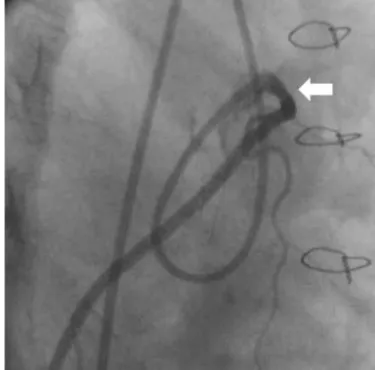497 Copyright © 2012 The Korean Society of Cardiology
Korean Circulation Journal
Introduction
Congenital coronary anomalies are present in approximately 1%
of patients referred for cardiac catheterization.
1-3)However, the in- cidence was found to be 5.6% in a recent prospective angiographic study of 1950 consecutive cases.
4)Among these, an anomalous or- igin of right coronary artery (RCA) from the left sinus was found in approximately 0.03-0.09% of patients undergoing coronary angi- ography (CAG).
5)An anomalous origin of RCA from the ascending aorta above the left sinus of valsalva is associated with angina pectoris, acute myocardial infarction or sudden cardiac arrest when it courses between the aorta and the pulmonary trunk.
6)7)Addition- ally, a case of sinus of valsalva aneurysms with ventricular septal
Case Report
http://dx.doi.org/10.4070/kcj.2012.42.7.497 Print ISSN 1738-5520 • On-line ISSN 1738-5555
Successful Percutaneous Coronary Intervention in an Anomalous Origin of the Right Coronary Artery From the Ascending Aorta Above the Left Sinus of the Valsalva
Seon-Ah Jin, MD 1 , Seok-Woo Seong, MD 1 , Song Soo Kim, MD 2 , Young Dal Lee, MD 1 , Ung Lim Choi, MD 1 , Si-Wan Choi, MD 1 , and Jin-Ok Jeong, MD 1
1

